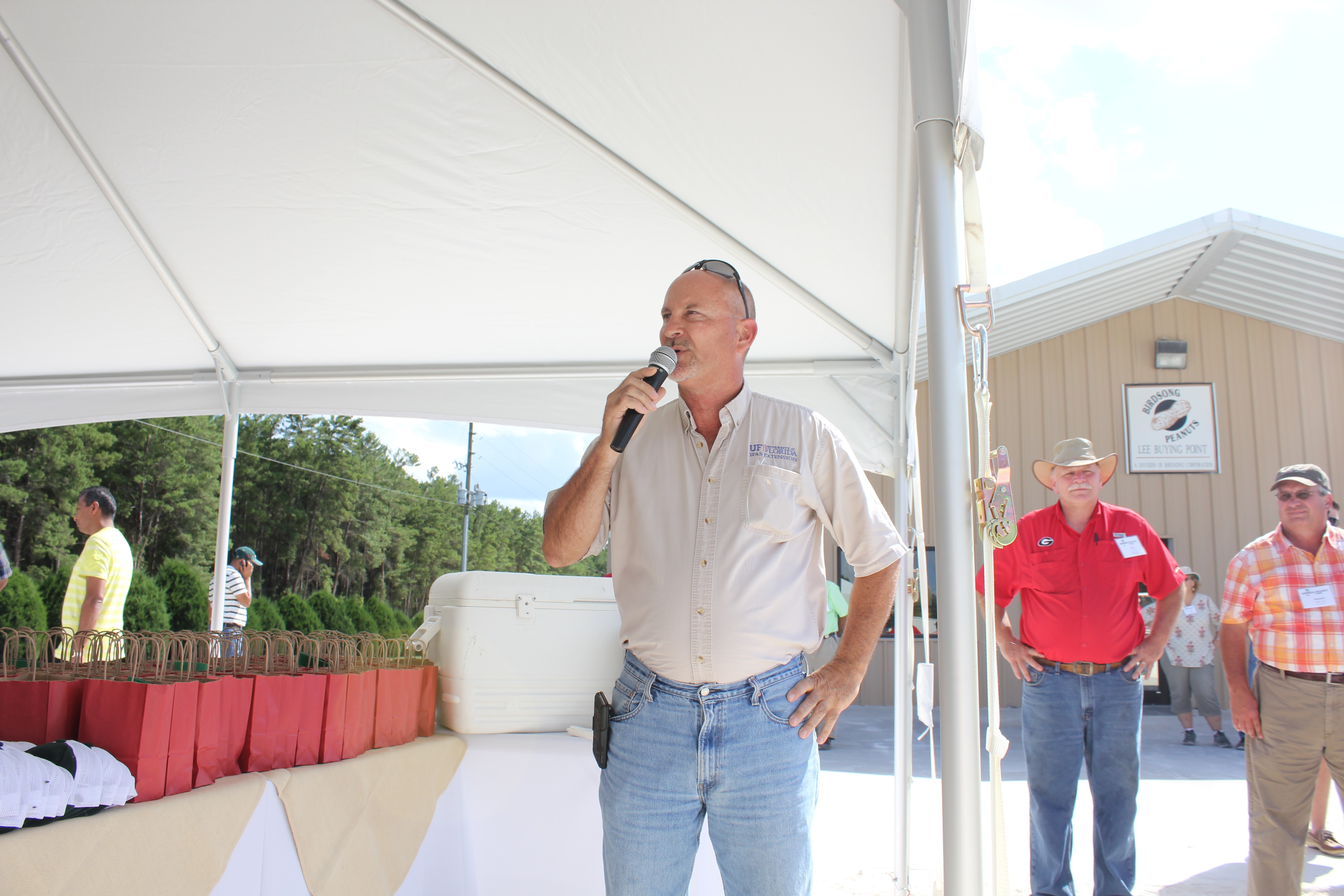Dr. Nathan Smith, extension economist with the University of Georgia’s College of Agricultural and Environmental Sciences, provided an update on the 2014 Farm Bill during the Hot Topics session. His presentation’s goal was to give tour attendees more information about the Farm Bill, including new changes and ways it will affect peanuts. Included in his presentation was a summary of the new Farm Bill, particularly as it relates to peanuts. Smith stated we have had the same Farm Bill since 2008. This new program will repeal DCP and ACRE programs and eliminate direct payments and counter-cyclical payments. It also establishes new commodity programs for all covered commodities, excluding cotton. Price Loss Coverage (PLC), or price safety net and Agricultural Risk Coverage (ARC), or revenue safety net will be options for farmers. This updated program establishes a new “shallow loss” insurance policy called supplemental coverage option (SCO), which will be available for commodities enrolled in PLC and non-STAX cotton. This will be available beginning in 2015.
Smith stated the marketing assistance loan did not change much. Peanut storage and handling cost pretty much stayed the same, as well.
Producers must make a choice for 2014 – an election between PLC, County ARC and individual (Farm) ARC. They have a one-time opportunity to relocate their base acres and update payment yields, which would be used on the PLC program. Farmers’ crop insurance decisions will be yield protection or revenue protection, as well as coverage level. Also, they will be deciding if they want to buy the SCO option if they choose PLC.
To give attendees an update for Georgia, Smith provided statistics on Georgia’s participation. According to Smith, Georgia had 2,983,213 base acres in 2009. This acreage was heavy in cotton and peanut base.
In reference to generic base, Smith stated cotton base becomes generic base in the new bill. Also, generic base does not change during the life of the Farm Bill. Generic base can be used on a year-to-year basis to temporary allocate to a covered commodity (excluding cotton) planted. He said it was important to note a covered commodity must be planted to be eligible for any generic base allocation.
Overall, program decisions for peanuts will be pretty straight forward for most cases. Other crops will be more complicated driven by price outlook. Options for reallocation base and updating yields will vary on a farm by farm, case by case basis because of dynamics of landowner and tenant relationships.













